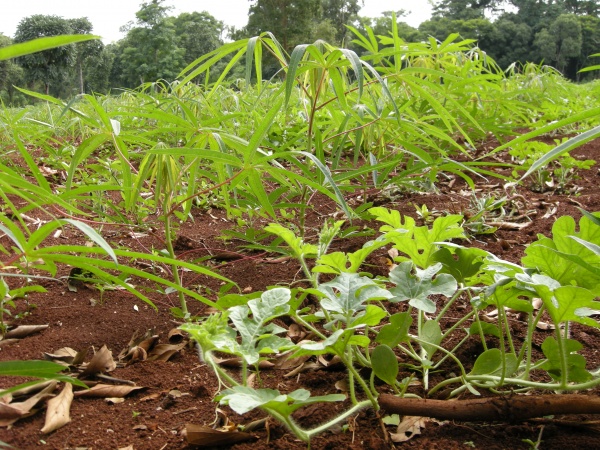Land Use and Biodiversity Patterns on Chacras in Northeast Argentina
03.05.2010
-
DATE OF SUBMISSION :
-
03/05/2010
-
REGION :
-
South America
-
COUNTRY :
-
Argentina (Misiones)
-
SUMMARY :
-
The Province of Misiones located in northeast Argentina, harbours the country’s only remaining subtropical forest, vast untarnished natural expanses and many plantations. Here a locally focused, family owned and operated, sustainable land use system referred to as “chacra” plays an important role in maintaining the biodiversity of the region. Chacras focus on the family house and farmland but often include tree rows, plantations, water sources and secondary forests. The secondary forests are a source of fuel and combined with the rivers and ponds, which are host to a broad spectrum of habitats. They typically surround fields that contain the staple of mandioca and other wide variety of produce, and form a mosaic-like biodiverse environment in chacras. The chacras of Misiones lie between urban areas and a nature preserve and serve as a buffer zone to both. There are significant challenges involved in achieving a steady income based on the current distribution of agricultural products. However, in order to maintain wide variety of benefits of chacras, it is necessary for farmers to continue managing and cultivating the land. In addition, it is important for landowners, together with governmental bodies, researchers, and other stakeholders, to recognize that chacras are important for maintaining biodiversity and sustainability in the surrounding preserves.
-
KEYWORD :
-
Chacras, nature preserve, family owned, mosaic-like environment, buffer zone
-
AUTHOR:
-
Mr. Mitsuhiko Toda is a Senior Research Scientist of Japan Wildlife Research Center (JWRC). His academic specialty is animal ecology and herpetology. He is interested in ecology of alien reptiles and amphibians in Japan. .He has been involved in the work on the Satoyama Initiative Projects, Alien Species Issue Research and Examination Project on Ogasawara Islands, and others. Mr. Ginzo Aoyama is a Corporate Executive Officer of Japan Wildlife Research Center (JWRC). His academic specialty is forest ecology. He worked in Ministry of the Environment, Japan, from 1974 to 2007, and involved in the management of National Parks and Nature Restoration Projects. He has engages in the work on developing the Coral Reef Conservation Action Plan and the Satoyama Initiative Projects since he joined JWRC.









